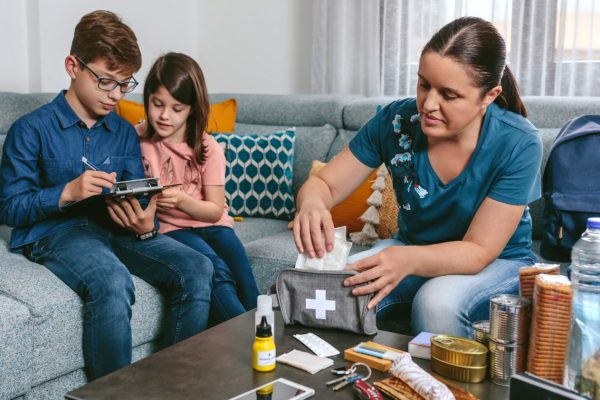
Proprioception: What Is It? (And 8 Signs of Dysfunction)
by Katie Dahlerbruch, OTD, OTR/L and edited by Alice Lockwood
Most people are familiar with the five main senses: touch (tactile sense), hearing (auditory sense), sight (visual sense), smell (olfactory sense), and taste (gustatory sense). Often less discussed, but equally as important, are the senses related to gravity and movement (vestibular sense) and position and movement of muscles and joints (proprioceptive sense). Sensory integration theories highlight how both the vestibular and proprioceptive senses are foundational to an individual’s development.
What is Proprioception?
Proprioception plays a key role in body awareness and understanding one’s position in space. Our proprioceptors in the body detect changes in movement or position, and further inform the brain about any changes in muscle tension or force. Proprioception allows automaticity in everyday movements, such as taking steps without the need to look at your feet and the ability to navigate rooms while in the dark. The proprioceptive system, additionally, informs oral motor function and one’s ability to move food in the mouth and appropriately chew.
Proprioception Dysfunction: Signs to Look For
What may it look like when children have proprioceptive dysfunction or poor proprioceptive processing? The child may:
- Use too much or too little force when writing, giving high-fives, or throwing balls
- Drop or spill items
- Appear “clumsy,” often falling or bumping into people or objects
- Have a preference for crashing into things
- Be overactive, preferring to run between locations
- Have a preference for tight hugs or tight clothing
- Play rough with peers
- Have a preference for crunchy, chewy foods
What is Proprioceptive Input?
Proprioceptive input is also one of the main regulators in the body, which means it helps to calm an active nervous system and can help to organise a child if they feel overstimulated by an environment.
Proprioceptive input can enhance attention and focus and can be an effective strategy to regulate and prepare a child for activities throughout the day.
How is Proprioception Addressed in OT?
Occupational therapists can help to improve impaired proprioception by providing opportunities for “heavy work” which provide intense input to the muscles and joints.
Examples of Proprioception Heavy Work Include:
- Climbing-based obstacle courses
- Wheelbarrow walks
- Pushing, pulling, or carrying weighted objects
- Playing on the monkey bars or hanging from a trapeze
- Jumping and crashing activities
Other Ways That Provide Increased Proprioceptive Input Throughout the Body:
- Using playdoh or putty while at the table
- Eating crunchy or chewy snacks
- Sucking on a lollipop or sucking thick liquid (like a smoothie) through a straw
The above activities are general and not curated for individual needs. If you suspect your child may have challenges with proprioceptive processing, or sensory progressing in general, talk with an occupational therapist to determine the activities that may best support your child.
This post was originally published on the NAPA blog here and is republished with permission.
NAPA Centre provides both traditional and non-traditional therapies as recommended by professionals from around the world. They specialise in offering three-week intensive therapy programs tailored to each of our patient’s individualised needs. By utilising a wide variety of therapies and techniques they are able to target the unique goals of each of their families. Find out more at napa.com.au






